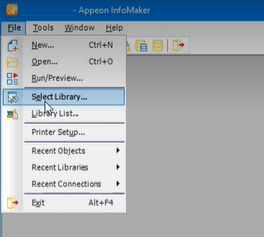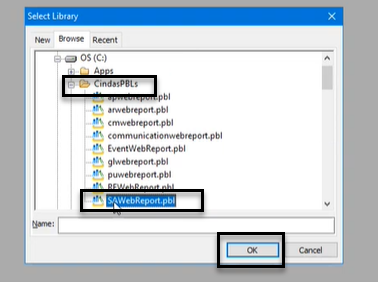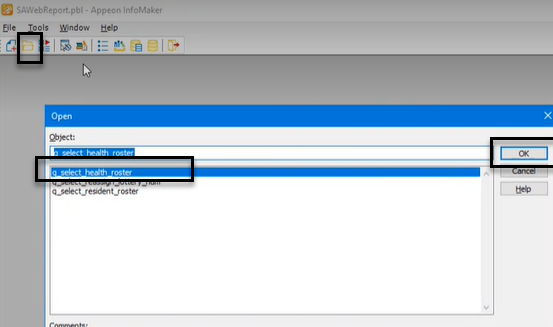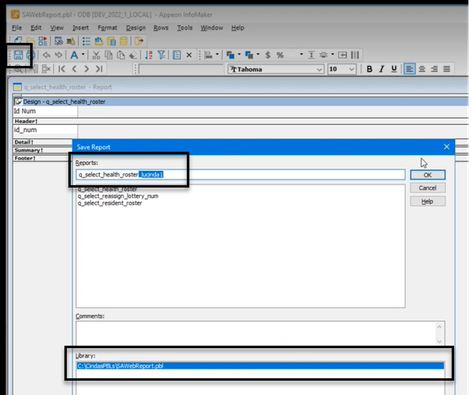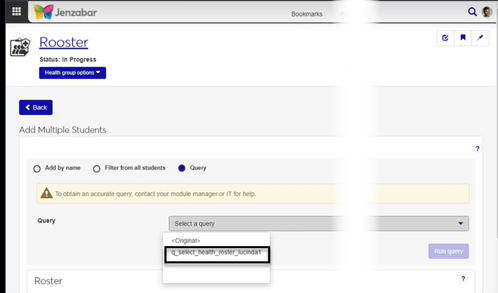Grade Report
Important
Information and features vary according to the roles to which you belong and the permissions associated with those roles. For more information, contact your module manager or your campus support team.
Use this page to generate grade reports. Search and filter tools help you tailor your report to the students you choose.
To build a list of students for the report, you first select a year/term. Then you select which students from that year/term to include in the report.
These are the options for finding students to include:
Student: Lets you find students one at a time using their name or ID
Filters: Lets you search for students using either or both of the filters (Section, Subterm)
Data Set: Lets you select a predefined data set. The Original data set includes all sections scheduled for the selected year/term.
Note
Data sets use InfoMaker to query the database and determine which students are included. Queries are managed in InfoMaker, and updates made there are reflected in J1 Web.
The Original data set is provided by Jenzabar. Your school can define others.
Data sets are called queries in Desktop.
Students are listed alphabetically by last name. Each student's portion of the report lists these fields:
Student (ID and Name)
Grading Period (such as midterm or final)
Advisor
Major
Address
Division (if the student has several divisions, the courses and grades for each division are listed separately)
Courses
Course Code and Title
Grade Code (the grade itself)
Credits Attempted
Credits Earned
Quality Points
Term (totals)
GPA
Credits Attempted
Credits Earned
Quality Points
Career (totals)
GPA
Credits Attempted
Credits Earned
Quality Points
Note
These fields are included in the Original layout. If you select a different layout, you may see different fields.
Select a grading period (such as midterm or final) and a division group. You can also enter a subtitle for the report and select a layout. The Original layout (d_grade_rpt) is provided and is selected by default.
Tip
Division groups are defined on the Division Group Definitions page.
You can generate grade reports in Desktop, too, on the Grade Report window. The reports contain the same information wherever they're generated.
Permission to generate grade distribution reports is available in the Reports section of these roles:
Registrar
Registration Module Manager
Registration Reporting Module Manager
The permission required is "Can generate grade distribution reports".
Note
Because grade reports use students' legal name, you also need the "Can view additional name information" permission found in the Person Information Individual Details section of this role:
Person Management
In the Registration Reporting and Processes hub, click Hub options.
In the Grading reports section, select Grade report. The Grade Report page opens.
In Term, enter a year. The matching year/terms appear. Select one.
To build the list of students for the report:
Select a radio button.
Student: Lets you find students one at a time using their name or ID. Begin typing part of a student's name or ID, and select from the list. You can add multiple students.
Filters:
Select a filter.
Begin typing a part of a value for the filter, and select a value from the list. You can select multiple values in each filter.
If you wish, click Add another filter to further filter the list.
Data Set: Lets you select a predefined data set. The Original data set includes all students enrolled in the selected year/term.
Click Add students. The button shows the number of students that will be added to the list.
You can add more students using the same radio button or different ones to find more students, and then click Add students again.
Display Options:
Select a Grading Period (required).
Select a Division Group (required).
You can enter a Subtitle (not required).
In Layout, the Original layout (d_grade_rpt) is selected by default. If your school has created other layouts, you can select one.
Click Generate PDF. The report opens in a new tab.
To save or print the report, use your browser's features.
On a student's Summary page, click the Person options drop-down.
Select Student, Reports, and Grade. The Grade Report pop-up opens.
Select a Year / Term and a Grading Period.
Click Generate PDF. The report opens in a new tab.
To save or print the report, use your browser's features.
Why can't I view a grade report even though I have permission to view them?
If you don't have permission to see students' Legal Name, you can't view the grade report. Permission to view legal names is in the Person Management role.
Why are students missing from the grade report?
The students may have holds. Students with holds aren't included.
In most cases, yes. Customized versions of the report created in Desktop before your school started using J1 Web should be available as options in the Report Layout drop-down. If your school created new customized layouts in Desktop and copied them to the appropriate location on the J1 Web server, those reports are also available in the drop-down.
However, certain reports were modified to be used in J1 Web (i.e., the base report for J1 Web is different from the base report in Desktop). In those cases, the customized versions from Desktop will not work even when they are moved to the correct location on the J1 Web server. You'll need to re-customize those reports from the original version of the J1 Web report by following the instructions to Customize Reports for J1 Web.
See the help for each report page for guidance about customizing a specific report.
For the customized versions of the report created in Desktop to appear as choices in the Report Layout field drop-down, your campus support team needed to complete certain steps as part of the installation process. For more information, contact your campus support team or see Working with Reports in J1 Web.
Tip
Only custom versions of the report created in Desktop before J1 Web installation will appear as choices in the Report Layout field drop-down. Reports customized in Desktop after you've installed J1 Web are not available in the drop-down unless they have been copied over to the appropriate location on the J1 Web server.
Verify the PowerBuilder Services URL is entered correctly in System Administration, System Settings, Product Installs and Sign page.
The URL must use HTTPS and not HTTP
The URL subdomain and domain must match the J1 Web URL

If the location where you store J1 Web reports is not the default installation location (C: > Jenzabar > Reports), verify the J1 Web server has permission to access the location. Detailed steps are available in the help topic Working with Reports in J1 Web.
